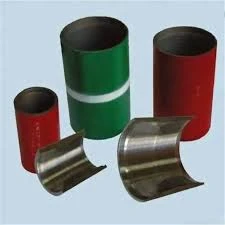- Afrikaans
- Albanian
- Amharic
- Arabic
- Armenian
- Azerbaijani
- Basque
- Belarusian
- Bengali
- Bosnian
- Bulgarian
- Catalan
- Cebuano
- Corsican
- Croatian
- Czech
- Danish
- Dutch
- English
- Esperanto
- Estonian
- Finnish
- French
- Frisian
- Galician
- Georgian
- German
- Greek
- Gujarati
- Haitian Creole
- hausa
- hawaiian
- Hebrew
- Hindi
- Miao
- Hungarian
- Icelandic
- igbo
- Indonesian
- irish
- Italian
- Japanese
- Javanese
- Kannada
- kazakh
- Khmer
- Rwandese
- Korean
- Kurdish
- Kyrgyz
- Lao
- Latin
- Latvian
- Lithuanian
- Luxembourgish
- Macedonian
- Malgashi
- Malay
- Malayalam
- Maltese
- Maori
- Marathi
- Mongolian
- Myanmar
- Nepali
- Norwegian
- Norwegian
- Occitan
- Pashto
- Persian
- Polish
- Portuguese
- Punjabi
- Romanian
- Russian
- Samoan
- Scottish Gaelic
- Serbian
- Sesotho
- Shona
- Sindhi
- Sinhala
- Slovak
- Slovenian
- Somali
- Spanish
- Sundanese
- Swahili
- Swedish
- Tagalog
- Tajik
- Tamil
- Tatar
- Telugu
- Thai
- Turkish
- Turkmen
- Ukrainian
- Urdu
- Uighur
- Uzbek
- Vietnamese
- Welsh
- Bantu
- Yiddish
- Yoruba
- Zulu
Exploring the Advantages and Applications of Steel Coupling in Modern Engineering Techniques
Understanding Steel Coupling Key Concepts and Applications
Steel coupling refers to the connection between two components of a structure or mechanical element, facilitating the transfer of forces, moments, and displacements. This concept is pivotal in various engineering fields, particularly in civil and mechanical engineering, where the integrity of structures relies heavily on the efficiency and effectiveness of couplings.
The Importance of Steel Coupling
In engineering, couplings allow for the connection and alignment of shafts, enabling the transmission of power and torque in mechanical systems. In construction, they are vital in the assembly of various structural components, such as beams and columns. Steel couplings are particularly favored due to their high strength, durability, and resistance to environmental factors, making them suitable for a multitude of applications.
Types of Steel Couplings
There are several types of steel couplings, each designed for specific applications
1. Rigid Couplings These couplings are used to connect two shafts that must be perfectly aligned. They are ideal for situations where there is minimal shaft misalignment and are typically made from solid steel.
2. Flexible Couplings These are employed when slight misalignment of shafts occurs. They can accommodate angular, parallel, or axial misalignment, allowing for smoother operation and reducing stress on the components.
3. Sleeve Couplings A common type of rigid coupling, sleeve couplings consist of a cylindrical sleeve that connects two shafts. They offer remarkable strength and can withstand significant torque.
4. Flanged Couplings Flanged couplings consist of two flanges bolted together with a gasket in between, providing a tight seal. They are widely used in piping and valve systems.
5. Clamp Couplings These are used to join two shafts while allowing for disconnection without axial movement. This makes maintenance easier and ensures that systems can be efficiently assembled and disassembled.
Applications of Steel Coupling
Steel couplings find applications across various industries
steel coupling

- Construction In buildings and bridges, steel couplings are essential for connecting structural elements like beams and columns. They ensure stability and strength, accommodating the dynamic loads experienced by the structure.
- Manufacturing In manufacturing plants, couplings are used extensively in machinery to connect motors to driven devices like gears and pumps. This allows for the efficient transmission of energy and motion.
- Aerospace In the aerospace industry, steel couplings must endure extreme stresses and temperatures. They are used in engines and other critical components where reliability is paramount.
- Automotive Couplings in automotive applications must enable both power transmission and flexibility due to the dynamic nature of vehicle operation. Steel couplings allow for smooth and efficient power transfer from the engine to the wheels.
Best Practices for Steel Coupling Installation
To ensure the longevity and performance of steel couplings, several best practices should be considered during installation
1. Proper Alignment Ensuring that the shafts are well-aligned is crucial. Misalignment can result in excessive wear and tear, leading to premature failure.
2. Regular Maintenance Periodic inspection and maintenance of couplings can prevent failures. Checks should include looking for signs of wear, misalignment, or corrosion.
3. Load Management Understanding the load each coupling will endure helps in selecting the appropriate type and size, ensuring they can handle expected stresses without failure.
4. Material Consideration Choosing the right material for coupling based on environmental conditions can significantly impact its performance and lifespan. Stainless steel or coated steel is often used in corrosive environments.
Conclusion
Steel coupling is a fundamental element in engineering and construction that ensures the effective transfer of forces across connected components. With various types of couplings available, understanding their specific applications and best practices aids engineers in selecting the right solution for their projects. As industries evolve, the designs and materials used in steel couplings will continue to advance, enhancing efficiency and reliability in countless applications.
-
Tubing Pup Joints: Essential Components for Oil and Gas OperationsNewsJul.10,2025
-
Pup Joints: Essential Components for Reliable Drilling OperationsNewsJul.10,2025
-
Pipe Couplings: Connecting Your World EfficientlyNewsJul.10,2025
-
Mastering Oilfield Operations with Quality Tubing and CasingNewsJul.10,2025
-
High-Quality Casing Couplings for Every NeedNewsJul.10,2025
-
Boost Your Drilling Efficiency with Premium Crossover Tools & Seating NipplesNewsJul.10,2025







